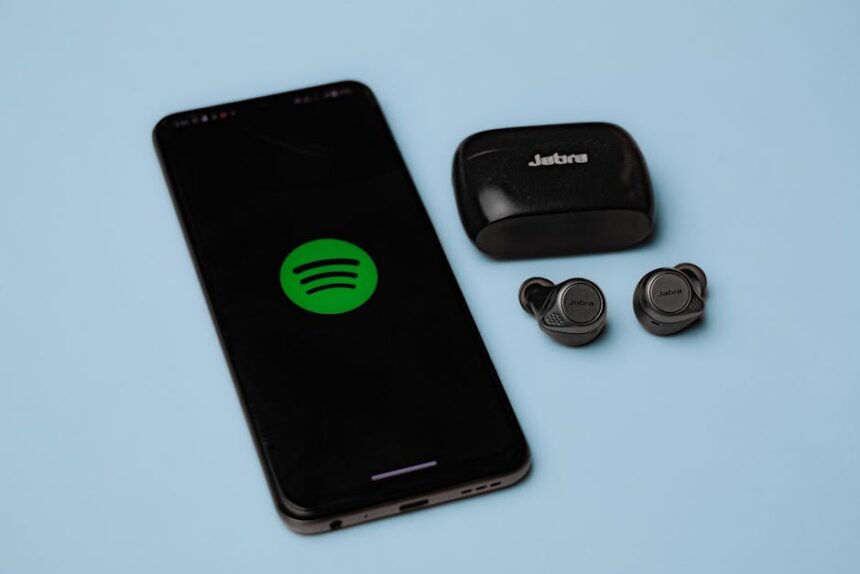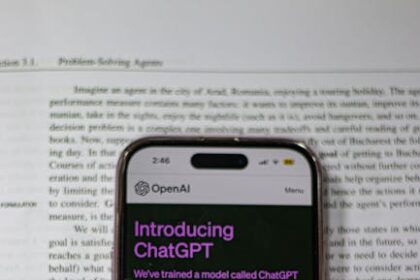User-Generated Content (UGC) fundamentally redefines the traditional marketing paradigm, shifting power from brands to their audiences. It represents any form of content—be it text, images, videos, reviews, or audio—that has been created and published by unpaid contributors, often fans, customers, or general consumers. In an era dominated by digital noise and skepticism towards conventional advertising, UGC emerges as an authentic, trustworthy, and immensely powerful antidote, fostering genuine connections and driving unparalleled engagement. This transition from passive consumers to active creators signifies a profound evolution in how brands build credibility and cultivate loyalty. The essence of UGC lies in its organic nature; it is content born from lived experiences, unscripted testimonials, and genuine enthusiasm, which inherently carries more weight than even the most polished brand messaging. Its power stems from its innate authenticity, resonating deeply with audiences who increasingly seek relatable and unbiased information. This peer-to-peer recommendation system bypasses the inherent distrust often associated with brand-produced advertisements, building a foundation of social proof that is invaluable in today’s hyper-connected marketplace. The ubiquity of digital voices, amplified through social media platforms, online forums, and review sites, means that consumers are constantly sharing their experiences, opinions, and creativity. Brands that strategically tap into this vast reservoir of content can unlock a sustainable and highly impactful marketing engine. By encouraging, curating, and leveraging these contributions, businesses not only gain access to diverse, fresh content but also transform their customers into vocal advocates, integral to their brand narrative.
Deconstructing UGC reveals a diverse taxonomy of content types, each serving unique purposes and offering distinct advantages. Visual UGC, perhaps the most prevalent and impactful category, encompasses a broad spectrum. Photos, ranging from casual smartphone snaps of products in daily use to high-quality, aesthetically pleasing lifestyle shots, provide immediate visual proof and inspiration. Videos, from short-form TikToks and Instagram Reels showcasing product unboxings or tutorials to longer YouTube reviews and live streams demonstrating real-time interactions, offer dynamic, immersive insights. These visual formats are particularly effective for storytelling, demonstrating product functionality, and capturing raw emotional responses. Textual UGC forms the bedrock of online reputation and informed decision-making. Customer reviews and ratings, whether on e-commerce sites, Google My Business, or dedicated review platforms, are paramount. They provide detailed feedback, highlight specific features, and address potential pain points, directly influencing purchasing decisions. Testimonials, often more elaborate and personal, share success stories and emotional connections with a brand. Blog posts, forum discussions, and comments sections on articles or product pages represent deeper dives into consumer sentiment and product-related discourse. FAQs sections, frequently populated by user-submitted questions and answers, become invaluable resources for prospective buyers. Audio UGC, though less ubiquitous, is gaining traction through podcasts, voice notes, and audio reviews. These formats offer a personal touch, allowing users to convey nuances and emotions that text might miss. Interactive UGC encourages direct participation and engagement. Polls, quizzes, and surveys gather opinions and preferences, while AR filters on social media allow users to virtually try on products or interact with brand elements in their environment. Game modifications (mods) created by players for video games represent a unique form of interactive UGC, extending the lifespan and appeal of the original content. Finally, co-created content blurs the lines between user and brand, involving the audience in the actual creation or refinement of products, services, or marketing campaigns. This could include crowdsourcing design ideas, naming conventions, or even collaborative storytelling projects. It’s crucial to distinguish UGC from influencer marketing, though they often overlap. While influencers are paid (or otherwise compensated) to promote products, UGC creators are typically unpaid, motivated by genuine satisfaction, community connection, or the desire for recognition, lending their content an unparalleled level of authenticity.
The multi-faceted benefits of strategically integrating User-Generated Content into your marketing strategy are profound, extending far beyond simple content creation. Foremost among these is the undeniable surge in trust and credibility. In a world saturated with advertising, consumers are increasingly wary of brand-generated messages. UGC acts as powerful social proof, leveraging the inherent human tendency to trust the recommendations of peers over corporate rhetoric. A Nielsen report on trust in advertising consistently shows that consumers place the highest degree of trust in recommendations from people they know, followed closely by consumer opinions posted online. When potential customers see real people, not paid models or actors, using and endorsing a product or service, their skepticism diminishes significantly. This authenticity fosters a deeper sense of reliability and transparency.
Enhanced engagement and community building are natural outcomes of a robust UGC strategy. By providing platforms and incentives for users to share their experiences, brands effectively transform passive consumers into active participants and brand advocates. This participatory dynamic cultivates a sense of ownership and belonging, fostering stronger emotional connections with the brand. When users see their content featured, recognized, or amplified, it validates their contributions and encourages continued engagement, fueling a virtuous cycle of loyalty and advocacy. This transformation from a transactional relationship to a relational one is key to long-term brand health.
UGC offers unparalleled SEO advantages, making it a potent force for fueling organic discovery. Each piece of user-generated content, whether a review, a product Q&A, or a social media post, represents fresh, unique, and constantly evolving content. Search engines highly favor websites that frequently update with new and relevant information. This continuous influx of content signals to algorithms that the site is active and valuable. Furthermore, UGC is a goldmine for long-tail keyword opportunities. Users naturally employ diverse, colloquial language when describing products or experiences, often using phrases that reflect specific queries people type into search engines. These nuanced keywords are difficult for brands to anticipate but are organically captured through user submissions, significantly broadening the brand’s organic search footprint. The presence of rich, diverse content also contributes to reduced bounce rates and increased dwell time on a website, both positive signals to search engines indicating user satisfaction and relevance. For local businesses, customer reviews, particularly on platforms like Google My Business, are absolutely critical for local SEO implications, directly influencing visibility in local search results and map packs.
From a practical standpoint, UGC offers significant cost-effectiveness and scalability. Content creation is traditionally resource-intensive, requiring budgets for photographers, videographers, copywriters, and designers. UGC, by contrast, leverages the creative capacity of your existing audience, dramatically reducing production costs. This decentralized content engine allows for a consistent, high-volume flow of content without a proportional increase in expenditure, making it a sustainable model for brands of all sizes.
Beyond marketing, UGC provides access to authentic market insights and fuels product development. Customer reviews and feedback are invaluable sources of unsolicited market research. They highlight pain points, uncover unexpected uses for products, identify popular features, and even suggest improvements or new product ideas. This direct voice of the customer allows brands to make data-driven decisions regarding product iterations, service enhancements, and even future strategic direction, leading to offerings that are genuinely aligned with consumer needs and preferences.
Ultimately, UGC plays a critical role in driving conversions and sales. The visual nature of much UGC, especially customer photos and videos, contributes to what is known as “visual commerce.” Seeing a product used by real people in real-life settings helps potential buyers visualize themselves using it, breaking down purchase hesitations. When integrated directly onto product pages, customer reviews and Q&A sections directly address common concerns, mitigate risk, and build confidence, significantly accelerating the path to purchase. Brands that effectively showcase UGC consistently report higher conversion rates compared to those relying solely on professional product imagery.
Strategic frameworks for cultivating and encouraging User-Generated Content require a proactive and audience-centric approach. The journey begins with defining clear objectives and Key Performance Indicators (KPIs). Before launching any UGC initiative, brands must articulate what they aim to achieve. Is it increased brand awareness, deeper engagement, higher sales, more authentic market research, or improved SEO? Specific, measurable goals—like “increase website conversions from UGC galleries by 15% in Q3” or “collect 1,000 photo submissions over three months”—will guide the entire strategy and allow for effective measurement of success. Without clear objectives, UGC efforts can become aimless and unquantifiable.
Next comes campaign design and ideation, which is about sparking creativity and motivating participation. Contests and challenges are highly effective, leveraging people’s competitive spirit and desire for recognition. Hashtag campaigns, where users submit content tagged with a specific, unique hashtag, are foundational for tracking and aggregation. Photo and video submission challenges, perhaps asking users to show how they use a product in a unique way or share a specific experience, provide clear creative briefs. Interactive prompts and questions on social media, such as “What’s your favorite way to use X?” or “Share your best memory with Y product,” encourage spontaneous sharing. Storytelling initiatives, inviting users to share their personal narratives related to the brand or product, tap into emotional connections and create compelling content. The key is to make participation fun, easy, and relevant to the audience’s interests.
Simplifying the submission process is paramount to maximizing participation. Any friction in the user journey will deter potential creators. This means developing intuitive, mobile-optimized platforms or forms that make uploading content seamless. Direct integrations with popular social media platforms (e.g., “Login with Instagram” or easy sharing buttons) remove barriers. The less effort required from the user, the higher the likelihood of submission.
Incentivization and recognition are powerful motivators. While authenticity suggests unpaid contributions, strategic incentives can significantly boost volume and quality. These can be monetary (vouchers, discounts, gift cards) or non-monetary (exclusive access to new products, early bird offers, special badges, or public recognition). Public recognition and amplification, such as featuring user content on official brand channels (website, social media feeds, email newsletters), is often the most potent motivator. It offers creators visibility, validation, and a sense of pride. Gamification elements, like leaderboards for most active contributors or points systems, can further drive sustained engagement.
Leveraging existing platforms is a crucial part of any UGC strategy. Instead of forcing users onto proprietary platforms, meet them where they already are. Instagram, TikTok, Facebook Groups, Reddit, Pinterest, and even LinkedIn offer native ways for users to create and share content. Each platform has its own nuances and audience demographics, requiring tailored approaches. Creating dedicated community forums or groups where users can interact directly with the brand and each other also fosters a sense of belonging and encourages deeper contributions.
User empowerment and co-creation represent a more advanced stage of UGC engagement. This involves giving users a direct voice in product development, marketing campaigns, or brand direction. Beta testing programs, where loyal users provide feedback on pre-release products, are a classic example. Crowdsourcing ideas for new products, features, or even marketing taglines not only generates UGC but also fosters immense goodwill and a sense of shared ownership. This approach transforms users from mere consumers into collaborators.
Finally, the power of asking cannot be underestimated. Often, users simply need a direct call to action. Prompting customers for reviews after a purchase, asking for photos of products in use through email campaigns, or clearly indicating how users can submit their content on packaging or receipts, provides the necessary nudge. Specific, clear questions or prompts typically yield better quality and more relevant UGC than vague requests.
Seamless integration is the hallmark of a successful UGC strategy, weaving user-generated content across all marketing channels to maximize its impact and reach. Website integration is fundamental. Product pages, in particular, should prominently feature customer reviews and ratings, which are crucial for conversion. Dedicated “Shop the Look” or customer photo galleries, often powered by social media feeds, allow potential buyers to see products in diverse, real-life contexts, inspiring purchases. Blogs can feature customer stories, testimonials, or Q&A sections populated by user questions and answers. Even the homepage can showcase a rotating carousel of compelling UGC to establish immediate trust and vibrancy.
Social media amplification is where UGC truly shines, leveraging its native environment. Brands should actively repurpose user posts, stories, and reels on their official feeds. This not only celebrates their audience but also provides an endless stream of authentic content. Beyond organic reach, UGC excels in paid social media advertising. A/B tests consistently show that ads featuring real customer photos or videos outperform professionally shot brand content in terms of Click-Through Rates (CTR) and lower Cost Per Acquisition (CPA). The authenticity of UGC cuts through the advertising noise, making ads feel less like marketing and more like genuine recommendations.
Email marketing campaigns can be significantly enhanced with UGC. Showcasing testimonials and customer success stories adds a layer of personalization and social proof that can increase open rates and conversion. Curated digests of the best UGC, highlighting creative submissions or top reviews, can keep subscribers engaged and reinforce brand loyalty. Using customer photos in email headers or product showcases makes the communication feel more relatable and less overtly promotional.
Offline and experiential marketing also benefits from bridging the digital and physical realms with UGC. In-store displays featuring customer photos, or digital billboards showcasing live social media feeds tagged with brand hashtags during events, create immersive and interactive experiences. Event-specific hashtag walls encourage attendees to share their experiences in real-time, instantly broadcasting the event’s vibrancy to a wider audience. This fusion of online and offline touchpoints amplifies event reach and engagement.
Finally, UGC can even reinvent traditional advertising. While more challenging to implement, user-submitted commercials or print ads can be incredibly powerful. Brands have successfully run campaigns inviting customers to create their own ads, resulting in highly authentic, diverse, and often viral content that resonates deeply because it’s by the people, for the people. Incorporating authentic visuals from users into traditional digital banner ads or even TV spots can significantly boost their perceived trustworthiness and effectiveness compared to polished, studio-produced content. This comprehensive integration ensures that UGC isn’t just a peripheral tactic but a central pillar of the entire marketing ecosystem.
The art and science of managing and curating User-Generated Content are critical for maintaining brand reputation, ensuring quality, and navigating legal complexities. The first step is to establish comprehensive guidelines and terms of use. These clear rules set expectations for content creators, outlining what types of content are acceptable (e.g., family-friendly, on-topic, respectful) and what is prohibited (e.g., hate speech, spam, nudity, misinformation). Crucially, these guidelines must also explicitly cover privacy and data handling, informing users how their content will be used, stored, and shared. This transparency is vital for building trust and ensuring compliance with data protection regulations.
Moderation strategies are essential for ensuring content quality and brand safety. Manual moderation, involving human oversight, is the most robust method for nuanced review, especially for sensitive content. Human moderators can interpret context, sentiment, and visual cues that automated systems might miss. However, for large volumes of UGC, manual moderation can be resource-intensive. This is where automated moderation, powered by AI and machine learning, becomes invaluable. AI-powered filters can quickly identify and flag inappropriate keywords, images, or videos based on predefined rules, profanity lists, or visual recognition. Most effective strategies employ hybrid approaches, where automated filters handle the bulk of obvious violations, leaving complex or ambiguous cases for human review. Implementing community reporting mechanisms also empowers users to flag content they deem inappropriate, creating a self-regulating element within the platform.
Rights management and permissions represent the legal imperative of leveraging UGC. It is absolutely crucial to obtain clear consent for usage from every user whose content you intend to feature. This is typically achieved through explicit opt-in checkboxes during submission, clear terms of use that users agree to, or direct outreach to gain permission for specific pieces of content (often through social media DMs). Brands must have a clear understanding of copyright and licensing laws. While a user may post content publicly, they still retain copyright unless explicitly transferred or licensed. Without proper permission, using UGC can lead to legal disputes and reputational damage. There are specialized tools for rights management (e.g., Pixlee, Olapic, TINT) that automate the process of requesting, tracking, and managing user permissions, making it scalable for large volumes of content.
Quality control and brand alignment are ongoing processes. Not all submitted UGC will be suitable for public display. Brands need to filter out low-quality, irrelevant, or off-brand submissions that do not meet aesthetic standards or align with the brand’s image. In some cases, with user permission, minor enhancements (e.g., cropping, color correction) can elevate UGC to better fit brand guidelines without compromising its authenticity. The goal is to present a cohesive and high-quality representation of the brand, even when leveraging diverse user contributions.
Finally, effective storing, organizing, and accessing UGC is vital for long-term utility. Implementing Digital Asset Management (DAM) systems specifically designed for UGC allows brands to store, tag, categorize, and search through vast libraries of user-generated photos, videos, and text. Proper tagging by product, campaign, theme, or sentiment ensures that valuable UGC assets can be easily retrieved and repurposed across various marketing channels whenever needed, maximizing their lifespan and ROI.
Measuring the Return on Investment (ROI) of your User-Generated Content strategy is essential for demonstrating its value, optimizing campaigns, and securing future investment. A robust measurement framework relies on identifying and tracking the right Key Performance Indicators (KPIs) for UGC. These metrics typically fall into several categories:
For Awareness, monitor:
- Reach and Impressions: How many people saw the UGC and how many times was it viewed across all channels?
- Mentions and Share of Voice: How often is your brand mentioned in UGC, and what percentage of relevant online conversations does your UGC represent?
For Engagement, track:
- Likes, Comments, Shares, and Saves: These direct interactions indicate how compelling and resonant the content is.
- Dwell Time: On web pages featuring UGC, longer dwell times suggest users are actively consuming the content.
- Click-Through Rates (CTR): For ads or links featuring UGC, CTR measures how effectively the content drives users to take action.
For Conversion, quantify:
- Sales and Leads: Direct attribution of purchases or lead generations linked to exposure to UGC. This might require specific tracking codes or analytics setup.
- Sign-ups: If UGC encourages newsletter subscriptions or account registrations.
- Average Order Value (AOV): Sometimes, seeing authentic UGC can encourage larger purchases or the exploration of more products.
For Sentiment, assess:
- Brand Perception: Analyzing the overall tone and sentiment of UGC (positive, negative, neutral) provides qualitative insights into brand health.
- Net Promoter Score (NPS) from Reviews: While not strictly UGC, the feedback within reviews directly contributes to brand perception and can be tied back to UGC strategy.
For SEO, observe:
- Organic Traffic: An increase in organic visitors to pages rich with UGC (e.g., product pages with many reviews).
- Keyword Rankings: Improved search engine rankings for long-tail keywords identified within UGC.
- Backlinks from Shared UGC: When UGC is shared on other reputable sites, it can generate valuable backlinks.
Attribution models for UGC-driven conversions present a unique challenge. Unlike direct response ads, UGC often plays a supporting role in the customer journey, influencing at various touchpoints.
- Last-Touch Attribution: Credits the final interaction (e.g., clicking on a UGC-powered ad) before conversion.
- First-Touch Attribution: Credits the initial exposure to UGC that sparked interest.
- Multi-Touch Attribution: Provides a more holistic view, attributing value across all interactions with UGC throughout the customer journey. Analyzing customer journeys that include UGC exposure helps understand its cumulative impact, even if it’s not the last touchpoint. Tools can segment users who viewed UGC from those who didn’t and compare their conversion rates.
Finally, leveraging appropriate analytics tools and platforms is crucial.
- Native Social Media Analytics: Platforms like Instagram Insights, TikTok Analytics, and Facebook Page Insights provide basic metrics on reach, engagement, and audience demographics for UGC shared on those platforms.
- Google Analytics (or similar web analytics tools): Allows tracking of website traffic, bounce rates, dwell time, and conversion pathways for pages featuring UGC. Custom segments and events can isolate UGC impact.
- CRM Data: Integrating customer relationship management data can help link UGC exposure to customer lifetime value or repeat purchases.
- Dedicated UGC Platforms: Many UGC management platforms (e.g., Yotpo, Bazaarvoice, Stackla) come equipped with robust analytics dashboards specifically designed to track UGC performance, including content volume, sentiment, engagement rates, and sometimes even direct conversion attribution. These specialized tools offer deeper insights and streamlined reporting for comprehensive UGC strategy analysis.
Navigating the landscape of User-Generated Content, while immensely rewarding, comes with its own set of challenges that demand careful consideration and proactive management. One significant challenge is maintaining quality and consistency amidst the sheer volume of content. Not all user submissions will be high-quality, relevant, or align with brand aesthetics. A robust moderation process is essential to filter out spam, low-resolution images, off-topic comments, or inappropriate content, ensuring that only brand-elevating UGC is showcased. The volume vs. value dilemma requires a strategic balance between encouraging participation and setting clear standards.
Legal and ethical minefields represent a critical hurdle. Foremost among these is copyright infringement. Users may unknowingly (or knowingly) submit content that they do not own or have the rights to use. Brands must implement strict policies and review processes to avoid inadvertently publishing copyrighted material. Privacy breaches are another concern, as users might inadvertently include personally identifiable information of others in their submissions. Clear guidelines and careful moderation are necessary to protect individual privacy. The rise of misinformation and fake news also poses a threat; UGC can be a vehicle for spreading false or harmful narratives, requiring brands to be vigilant about the accuracy and truthfulness of the content they amplify.
Brand safety and reputation risk are intrinsically linked to the quality and ethical considerations of UGC. Negative UGC, trolling, or the submission of inappropriate content can quickly damage a brand’s image if not addressed swiftly and effectively. A public misstep in UGC management can lead to widespread backlash. The challenge of scalability issues arises when UGC efforts become highly successful, leading to an overwhelming volume of content to manage, moderate, and curate. Manual processes quickly become unsustainable, necessitating robust automation tools and clear workflows. Finally, the fine line between authenticity and fabrication is a constant concern. While UGC thrives on authenticity, there’s always the risk of users submitting inauthentic or fabricated content, either for personal gain or to maliciously harm a brand. Brands must develop methods to spot such anomalies and ensure the genuine nature of their featured content.
Embracing best practices is key to mitigating these challenges and maximizing the benefits of UGC:
- Transparency is paramount: Clearly communicate your guidelines, terms of use, and privacy policies to users. If incentives are offered, disclose them transparently. This builds trust and sets realistic expectations.
- Proactive moderation: Whenever possible, implement pre-moderation (reviewing content before it goes live) for critical channels like product reviews or campaigns, especially where brand safety is paramount. For high-volume channels like social media, post-moderation combined with automated filters is more practical.
- Rapid response to negative UGC: Do not ignore negative feedback or inappropriate content. Address it quickly, empathetically, and constructively. This demonstrates commitment to customer satisfaction and effective reputation management. Transform complaints into opportunities for positive brand interaction.
- Diversification of UGC sources: Don’t rely solely on one platform or one type of content. Encourage submissions across various channels (reviews, social media, forums, direct submissions) to ensure a rich and varied stream of content and reduce single-point failure risks.
- Continuous optimization: UGC strategy is not a “set it and forget it” endeavor. Continuously monitor your KPIs, A/B test different calls to action, analyze what types of content resonate most with your audience, and learn from your data to refine your approach.
- Empowering your community: Provide easy tools for users to submit content, give them a voice, and genuinely listen to their feedback. The more valued and empowered users feel, the more likely they are to contribute high-quality, authentic content and become true brand advocates. Celebrate their contributions and make them feel like an integral part of your brand’s story.
The evolving landscape of User-Generated Content is dynamic, driven by technological advancements and shifting consumer behaviors, promising even more innovative ways for brands to leverage their audiences. One significant trend is the rise of hyper-personalization of UGC. Leveraging Artificial Intelligence (AI) and machine learning, brands can curate and recommend UGC to individual users based on their past browsing history, purchase behavior, and preferences. Imagine a user seeing reviews or photos from people with similar demographics, body types, or style preferences, making the content incredibly relevant and persuasive. This tailored experience moves beyond general social proof to highly specific, impactful recommendations.
The burgeoning Metaverse and immersive UGC present a revolutionary frontier. As virtual and augmented reality (AR/VR) technologies become more accessible, users will be able to create and share content within fully immersive digital environments. Brands are already exploring building experiences within virtual worlds where users can generate 3D models of products, design virtual spaces using brand elements, or participate in interactive, branded AR experiences. For instance, an AR filter that allows users to virtually “try on” furniture in their home or a VR game where players design and share virtual outfits using brand logos represents a new dimension of UGC. This pushes UGC beyond static images and videos into truly interactive, spatial content.
The rise of micro and nano-influencers continues to blur the lines between “influencer” and “everyday user.” These individuals, with smaller but highly engaged and niche followings, often feel more authentic and relatable than traditional mega-influencers. Their content, driven by genuine passion and trust within their specific communities, is essentially a form of highly effective UGC. Brands are increasingly partnering with these individuals, recognizing that their authentic voice resonates deeply and drives significant engagement and conversions within their dedicated audiences. This trend emphasizes authenticity at scale, making every satisfied customer a potential advocate.
Decentralized content and blockchain technology are emerging as solutions for ensuring content ownership and transparency in the creator economy. Non-Fungible Tokens (NFTs) could be used to certify ownership of UGC, allowing creators to retain rights and potentially earn royalties when their content is used or resold. This model empowers content creators, giving them more control over their intellectual property and potentially fostering new economic models around UGC. Blockchain can also provide an immutable record of content usage and permissions, adding a layer of transparency and trust.
Interactive and gamified UGC experiences are becoming more sophisticated. Beyond simple submissions, brands are creating engaging interactions that incentivize participation. This could include gamified loyalty programs where users earn points for sharing content, contributing ideas, or participating in challenges, unlocking exclusive rewards or status levels. Interactive polls, quizzes that generate personalized content, and even collaborative storytelling projects where users contribute chapters or plot points, transform UGC from a one-time submission into an ongoing, dynamic engagement.
Finally, the ethical deployment of AI and UGC will be critical. While AI can significantly enhance moderation, curation, and personalization of UGC, ensuring fairness, mitigating algorithmic bias, and respecting user privacy will be paramount. AI can help identify trends, categorize content, and even suggest optimal times to publish user content, but human oversight will remain essential to maintain authenticity and ethical standards. Simultaneously, ephemeral UGC and live streaming continue to gain prominence. Platforms like TikTok Live and Instagram Live provide real-time engagement opportunities where users generate spontaneous content, offering authentic, unscripted moments that foster immediacy and a deeper connection with the brand. This form of UGC captures raw energy and genuine interaction, proving the ever-expanding frontiers of audience-driven content creation.









